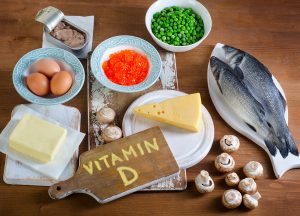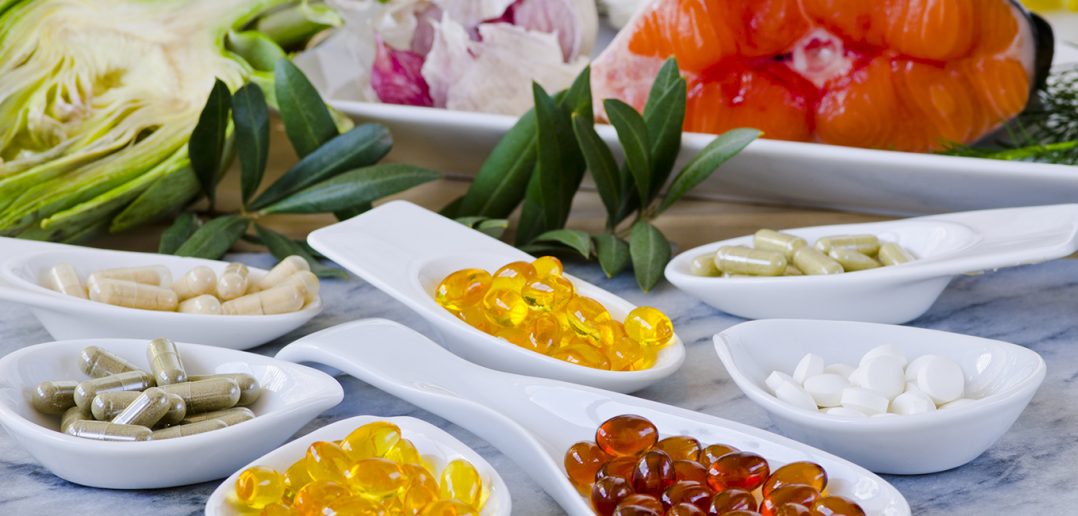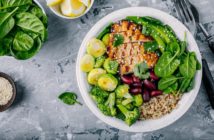Why do we eat food?
Well, at a basic level we need food to survive. We also eat because we feel hungry, we enjoy the flavours, we need to fuel exercise, and for many other reasons such as stress, comfort, sadness, joy and just because we’re bored.
Let’s look at food from the perspective of health. Yes food should taste good and fill us up, but forgetting that for a minute, what about the good things that food contains, the things that our bodies need to function and stay disease-free. Over and above fat, carbohydrate and protein, this includes vitamins, minerals and plant antioxidants.
Which foods contain more nutrients?

No need to take vitamin tablets if you eat a balanced food plan
Eating a varied diet is a good idea, and it’s safe to say that unprocessed, fresh food will always contain more nutrients than processed items. But we have to look at the growing process first, because when it comes to getting nutrients from fresh food, the soil is everything.
Intensive farming methods and chemicals used to grow most fresh, mainstream fruits and vegetables leave the soil depleted in nutrients – the plants will still grow, but they will be lacking in nutritional content. By contrast, non-intensive methods such as organic farming avoid chemicals and use crop rotation to preserve soil quality and the vital nutrients within it. This is good news for the plants, insects, animals and for us.
Sadly, the very cheapest produce from the supermarket is likely to be low in the nutrients you would normally expect to find in fresh food. Choosing organic and ideally local produce gives you best chance of eating foods rich in nutrients, and you don’t need to spend a fortune – local box schemes or farmers markets offer competitively priced produce.
Plant antioxidants
Antioxidants like flavonoids, carotenoids and phytosterols are found in brightly coloured fruits and vegetables, including tomatoes, peppers, carrots, broccoli, kale and berries. Plant antioxidants offer an array of health benefits, many of which we are still discovering, but they are best known for their anti-inflammatory benefits, quenching free radical damage that can otherwise promote ageing and diseases such as cancer.
Exercise can increase free radical activity in the body, so they’re especially important for anyone who trains regularly. These antioxidants are part of a plant’s defense system – they naturally protect the plant against pests and disease, but plants only produce them if they need to. Plants that haven’t been chemically treated with pesticides are often richer in antioxidants because they have been forced to produce more of these protective substances than conventionally grown produce.
How you prepare these colourful foods, and what you eat with them, are both important. Overcooking vegetables leaches nutrients into the cooking water, so lightly steam or stir fry for best effect. The bioavailability of the antioxidants in some foods is increased by cooking, such as tomatoes, peppers and berries. And many of the antioxidants in plant foods are fat soluble, meaning that fat needs to be present for them to be absorbed effectively – so serving them with some butter, olive oil, coconut oil or yoghurt should ensure you are getting the full benefit of their health-protective effects.
Nutrients from meat
Some nutrients are either absent or really hard to get enough of from plant foods alone, leaving vegetarians and vegans at risk of developing deficiencies. Iron would be a good example of this, with the heme iron from animal foods being much more bioavailable than the non-heme iron found in plant foods.
Vitamin A can’t be obtained from plant food at all. The precursor to vitamin A, beta-carotene, is found in plant foods, but it must be converted to vitamin A in the body using a process that is not always very efficient. Vitamins B3 and B12 are predominantly found in animal foods, with plant foods unable to offer meaningful amounts. Liver deserves special mention here; it is really and truly a superfood delivering concentrated levels of B vitamins, iron and vitamin A – eating liver just twice a week can really boost levels.
| Nutrient | Best sources |
| Vitamins | |
| Vitamin C | Bell peppers, chilli peppers, cauliflower, broccoli, leafy greens, citrus fruits, kiwis, berries, papaya |
| Vitamin A | Liver, beef, chicken, turkey, dairy products, egg yolks |
| Vitamin E | Sunflower seeds, almonds, olive oil, wheat germ, spinach, chard, avocado |
| Vitamin D | Fatty fish such as salmon, cod liver oil, mushrooms, egg yolk (NB food is not a rich source, sensible sunlight exposure is best) |
| Vitamin B1 (thiamine) | Trout, pork, macadamia nuts, sunflower seeds, sesame seeds, beans and lentils, oats, wheat germ, peas, spirulina |
| Vitamin B2 (riboflavin) | Liver, beef, parsley, almonds, mackerel, whey powder, spirulina |
| Vitamin B3 | Meat and fish |
| Vitamin B5 | Mushrooms, avocado, sweet potatoes, chicken, turkey, yoghurt, broccoli |
| Vitamin B6 | Tuna, turkey, beef, chicken, salmon, sweet potato, white potato, sunflower seeds, spinach, banana |
| Vitamin B9 (folate) | Beans and lentils, asparagus, leafy greens, broccoli, liver, wheat germ, parsley, peanuts, avocado |
| Vitamin B12 | Shellfish, sardines, salmon, tuna, cod, liver, lamb, beef, dairy products |
| Minerals | |
| Calcium | Dairy products, tinned fish with bones, sesame seeds, chia seeds, chickpeas, shellfish, almonds, blackstrap molasses, dried apricots and figs, blackcurrants, dark salads and leafy greens, parsley. |
| Potassium | All fruit and veg generally, but especially leafy greens, dried apricots, avocado, beetroot greens, beetroot, bok choy, beans and lentils, sweet potatoes, melon, tomatoes |
| Magnesium | Leafy greens, nuts and seeds, cocoa, spinach, chard, beetroot and turnip greens, quinoa, pulses, buckwheat |
| Zinc | Beef, lamb, shellfish, spinach, asparagus, mushrooms, sesame seeds, pumpkin seeds, pulses, quinoa, almonds, cashews |
| Selenium | Fish and seafood, mushrooms, asparagus, mustard seeds, turkey, chicken, lamb, beef |
| Manganese | Cloves, cinnamon, turmeric, oats, brown rice, spinach, collard greens, pineapple, raspberries, chard, strawberries, kale, squash, garlic |
| Antioxidants | |
| E.g. flavonoids, anthocyanins, phytosterols, catechins, carotenoids | Onions, apples, tomatoes, peppers, broccoli, leafy greens and lettuce, chickpeas, sweet potatoes, quinoa, all berries, cherries, red grapes (and red wine), plums, aubergine, red cabbage, red onions, pomegranates, kidney beans, red-fleshed peaches, almonds, walnuts, pistachios, macadamia nuts, flaxseed, cocoa/cacao, green and white tea |




